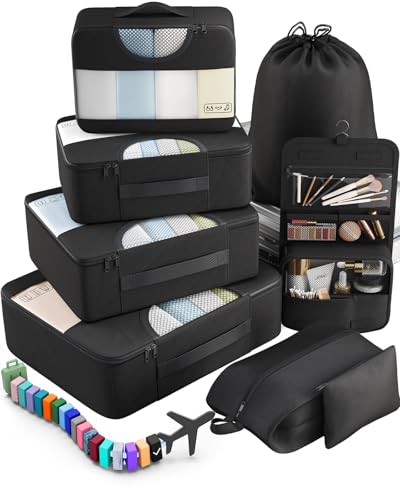On Socotra Island, they use Type A, D, and G power plugs and outlets. The voltage is 230V, and the frequency is 50Hz.
So, you’ll definitely need a travel adapter on Socotra Island. Not all their plugs and outlets are the same as our Type A and B back in the States.
Quick Overview of the Plugs on Socotra Island:
- Plug type on Socotra Island: A, D, and G
- Standard voltage: 230V
- Frequency: 50Hz
- Need a travel adapter? Yes, you do need a travel adapter
- Need a voltage converter? Some devices need it, others don’t
- Recommended plug adapter: Vintar Universal Travel Adapter Kit
This page is based on verified information from local power agencies, international standards organizations such as the IEC, and feedback from travelers who’ve recently been there.
The Only Travel Adapter You’ll Need on Socotra Island
Traveling to Socotra Island? You’ll need the right adapter to keep your devices powered up. We don’t sell them, but we’ve done the research so you don’t have to. Here’s the best one:
Recommended Travel Plug Adapter
by 1,000+ travelers on Amazon
Forgetting your power adapter isn’t the end of the world. You’ll probably still be able to pick one up locally. But honestly, having a good one packed before you go just saves time, money, and stress.
Socotra Island is frequently part of a regional itinerary that includes Saudi Arabia, Djibouti, or Oman. Plug types may differ, so check ahead.
Power Outlets on Socotra Island
On Socotra Island, they use Type A, D, and G power plugs and outlets.
Type A

Type A outlets have two flat prongs and no grounding pin.
Type D

Type D outlets have three large round prongs in a triangular layout and typically only accept Type D plugs, although Type C plugs might fit loosely and are not recommended for safe use.
Type G

Type G outlets have three rectangular prongs in a triangular layout and built-in fuses. Other plug types won’t fit without an adapter.
Do You Need a Voltage Converter?
Planning a trip to Socotra Island? The voltage there doesn’t match the 120V we use in the U.S., so you’ll probably need a voltage converter.
Always check your device’s power label before traveling. If it says “100-240V, 50/60 Hz”, your device can handle different voltages worldwide without needing a converter. This applies to most laptops, tablets, cameras, phones, and rechargeable personal care devices.

Which Travel Devices May Need a Converter?
Need a reliable voltage converter? These are the top picks according to real reviews — check them out.
| Device | Need Converter? | Notes |
|---|---|---|
| Phone | ❌ No (usually) | Most modern phone chargers are dual voltage (100–240V) |
| Laptop | ❌ No (usually) | Check the power brick label for 100–240V |
| Hairdryer | ✅ Yes (often) | High wattage; many models are not dual voltage |
| Electric toothbrush | ⚠️ Check voltage | Some models are 110V only |
| Camera / DSLR | ❌ No (usually) | Most chargers are dual voltage |
| Power bank | ❌ No | Charges via USB, adapter is enough |
| Electric shaver / trimmer | ⚠️ Check voltage | Older or cheaper models may not support 230V |
| Tablet / iPad | ❌ No | All models are dual voltage |
| Portable fan | ✅ Yes (sometimes) | Many models are not compatible with 230V |
| Game console | ⚠️ Check voltage | Newer consoles like PS5 and Xbox are often dual voltage — check to be sure |
| Bluetooth speaker | ❌ No (usually) | Charges via USB |
| E-reader (Kindle, etc.) | ❌ No | USB charging only, no converter needed |
Top Travel Essentials to Pack
Experienced travelers know: the right gear makes a difference. These handy items can save time and frustration.
Digital Luggage Scale
Packing Cubes
Power Bank
More About Socotra Island
Socotra looks like it belongs on another planet. The island sits off the coast of Yemen and is packed with strange and beautiful landscapes—dragon’s blood trees with umbrella-like tops, white-sand beaches, rocky cliffs, and caves that feel untouched by time.
Around a third of all plant life here can’t be found anywhere else in the world. You’ll see bottle-shaped trees, glowing green valleys, and some of the most surreal coastline you’ve ever laid eyes on. And the beaches? Totally wild, with turquoise water and barely a soul in sight.
Despite its remoteness, Socotra’s local communities are friendly and welcoming. Most travelers explore the island by 4×4, camping under the stars or staying in small guesthouses. It’s not for every tourist—but for nature lovers and off-the-map explorers, it’s pure magic.
Socotra Island uses the same plugs and outlets as the rest of Yemen.




